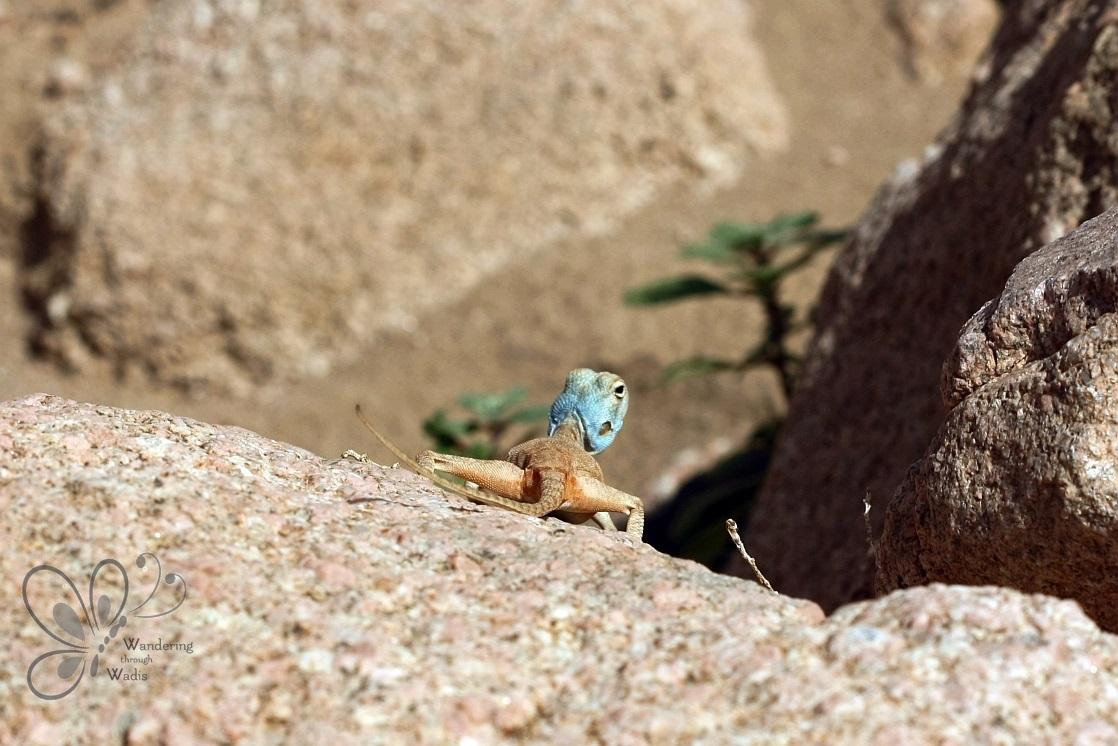Your cart is currently empty!
Mohamed ELBAGOURY

The Sinai Agama, also known as Qadi Sina, is a species of lizard native to the Sinai Peninsula in Egypt. This unique lizard species is characterized by its vibrant colors, social behavior, and adaptation to the harsh desert environment. In this essay, we will explore ten key outlines about the Sinai Agama and delve into the fascinating world of this species.
To begin with, the Sinai Agama is known for its striking appearance. The males of this species sport bright blue and orange colors, which become more vibrant during the breeding season. These colors serve as a form of display to attract females and establish dominance within their social hierarchy. In contrast, the females and juveniles of the species exhibit more muted colors, helping them blend into their sandy surroundings to avoid detection by predators.
In addition to their vibrant colors, Sinai Agamas are also known for their social behavior. They live in small groups called harems, which consist of one dominant male and several females. The male is responsible for defending the group’s territory and mating with the females, while the females take care of nesting and raising the offspring. This social structure enables the Sinai Agamas to cooperate and communicate effectively within their community.
Furthermore, the Sinai Agama has adapted to the harsh desert environment of the Sinai Peninsula. They possess specialized features such as cranial ornamentation and enlarged femoral pores, which help them regulate their body temperature and survive in extreme heat. Additionally, their burrowing behavior allows them to seek shelter from the scorching sun and avoid predators lurking on the surface.
Another crucial aspect of the Sinai Agama’s life cycle is its reproductive strategy. The females of the species lay eggs in shallow nests dug in the sand, where they are incubated until hatching. The incubation period varies depending on environmental conditions, with warmer temperatures accelerating the process. Once the eggs hatch, the juveniles emerge and must fend for themselves in the harsh desert environment.
Moreover, the diet of the Sinai Agama primarily consists of insects, small invertebrates, and vegetation. They are opportunistic feeders, meaning they will consume whatever food source is readily available in their environment. This flexibility in diet allows them to adapt to changing conditions and maintain their energy levels for survival in the desert habitat.
Additionally, the Sinai Agama faces various threats to its survival, including habitat loss, climate change, and predation. As human development encroaches on their natural habitat, these lizards are forced to contend with reduced resources and increased competition for food and nesting sites. Climate change also poses a threat to their survival, as rising temperatures and altered precipitation patterns can disrupt their reproductive cycles and food sources.
Furthermore, predation by birds of prey, snakes, and other predators poses a constant risk to the Sinai Agama population. To evade capture, these lizards rely on their keen sense of sight and agility, using their swift movements to escape imminent danger. However, not all individuals are successful in evading predators, leading to a constant cycle of predation and population regulation within the species.
Moreover, conservation efforts are essential to protect the Sinai Agama from further population decline and extinction. Initiatives such as habitat restoration, captive breeding programs, and public awareness campaigns can help raise awareness about the importance of preserving this unique species. By implementing sustainable practices and reducing human impact on their natural habitat, we can ensure the survival of the Sinai Agama for future generations to appreciate.
In conclusion, the Sinai Agama, or Qadi Sina, is a fascinating species of lizard that thrives in the desert environment of the Sinai Peninsula. From their vibrant colors and social behavior to their adaptation to harsh conditions and reproductive strategies, these lizards exhibit unique traits that make them a vital part of the ecosystem. By understanding and appreciating the complexities of the Sinai Agama, we can work towards ensuring their continued survival and conservation for years to come.